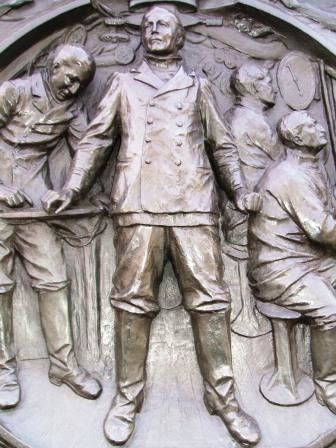Nationality English Parents Nathaniel Hitch Died 1957 | Name Frederick Hitch Known for Sculpture Education Royal Academy of Arts | |
 | ||
Born 1897 London, England Notable work War Memorials/Public Monuments | ||
Frederick Brook Hitch (1897–1957), the son of architectural sculptor Nathaniel Hitch, was a British sculptor. He attended the Royal Academy and was a Fellow of the Royal Society of British Sculptors and lived in Hertford, Hertfordshire, England.
Contents
Other works. Public Statues
Exhibitions
Brook Hitch exhibited at the Royal Academy from 1906 to 1947. Until 1914, his exhibits were mostly classical subjects. In 1917 he showed a medal commemorating the Victory of Jutland Bank. Thereafter he exhibited portraits, with the exception of a work entitled Grief, shown in 1924. In 1926 Hitch submitted maquettes in the competition for the award of the Canadian National War Memorial in Ottawa, the capital of Canada. Although he was not awarded the commission, his design was shown at the Royal Academy in 1926.
